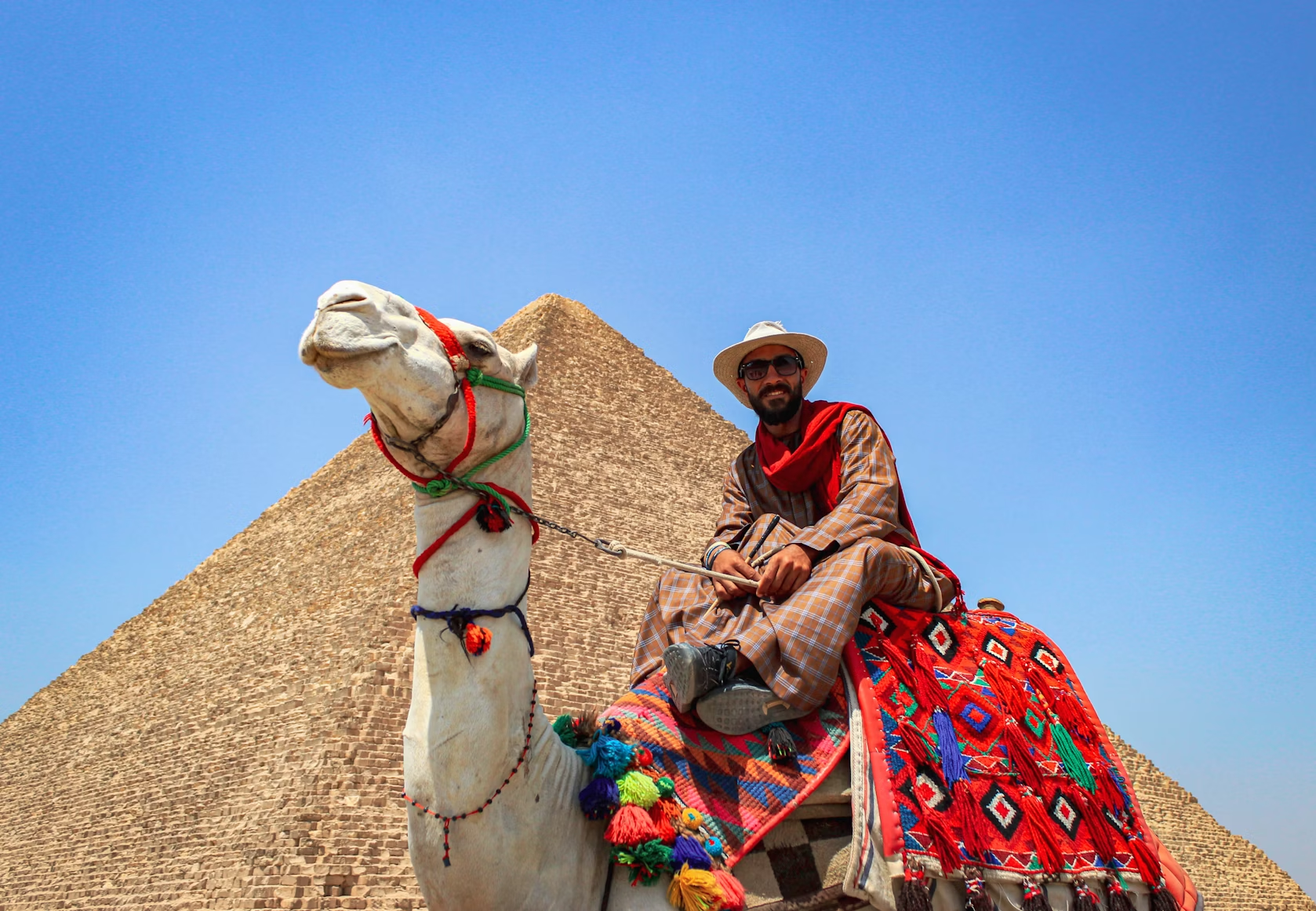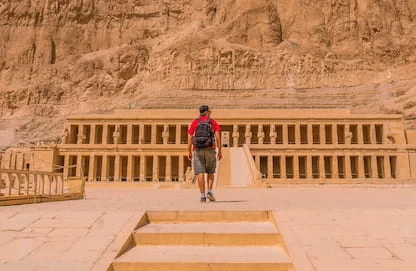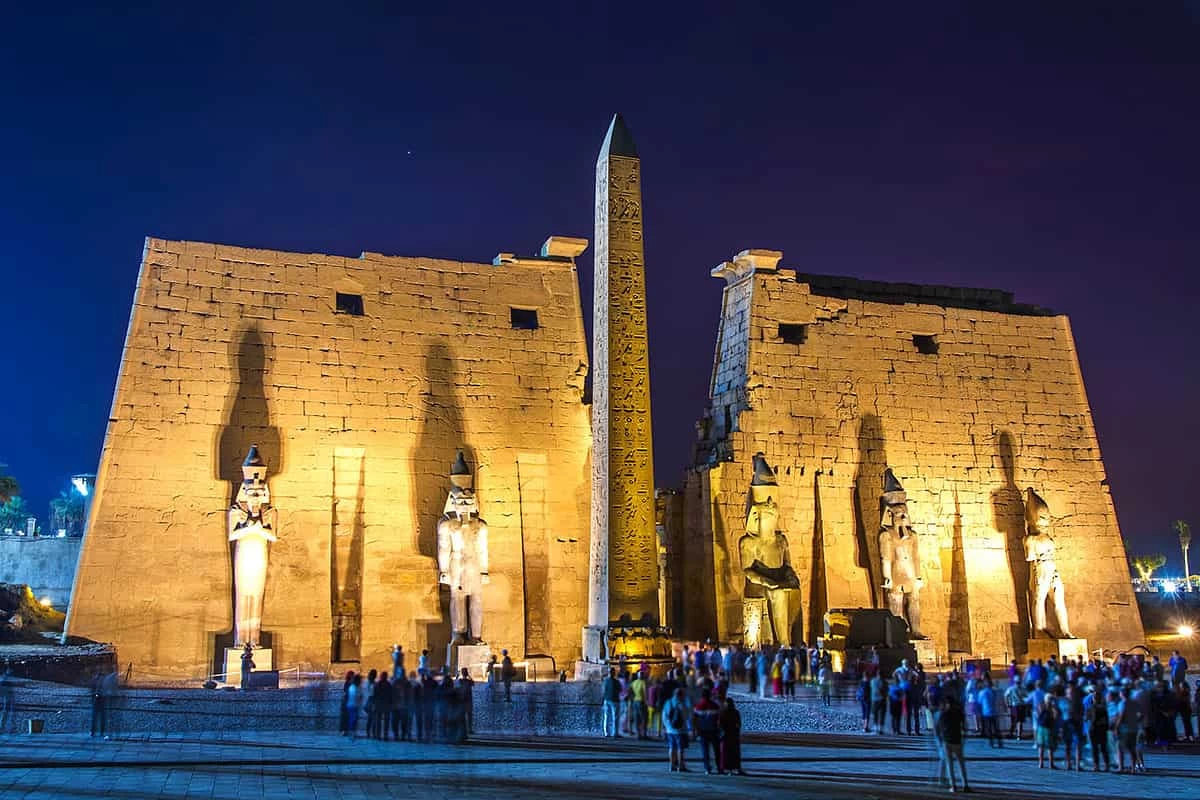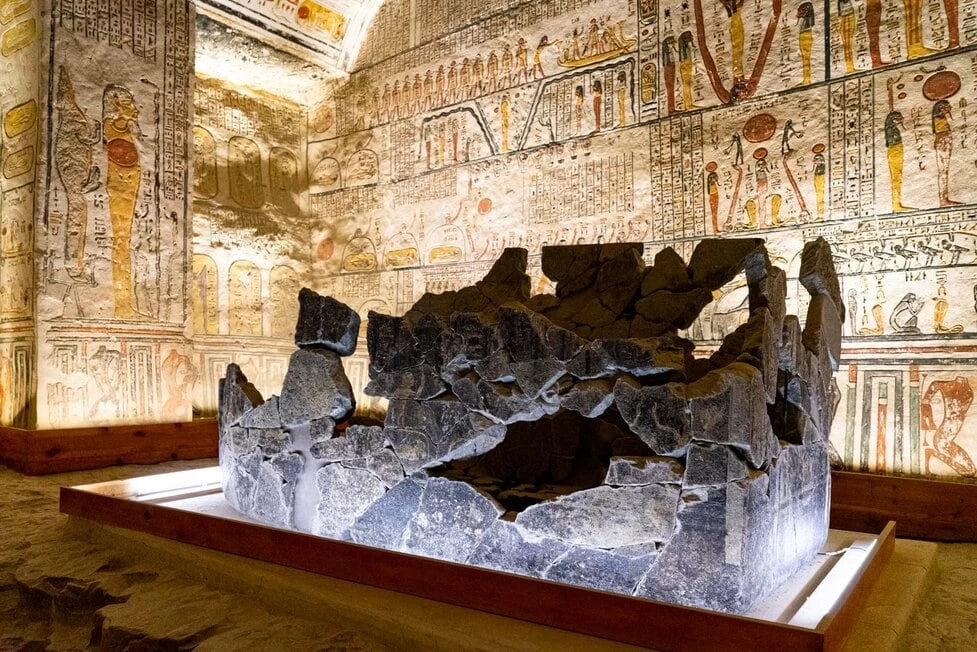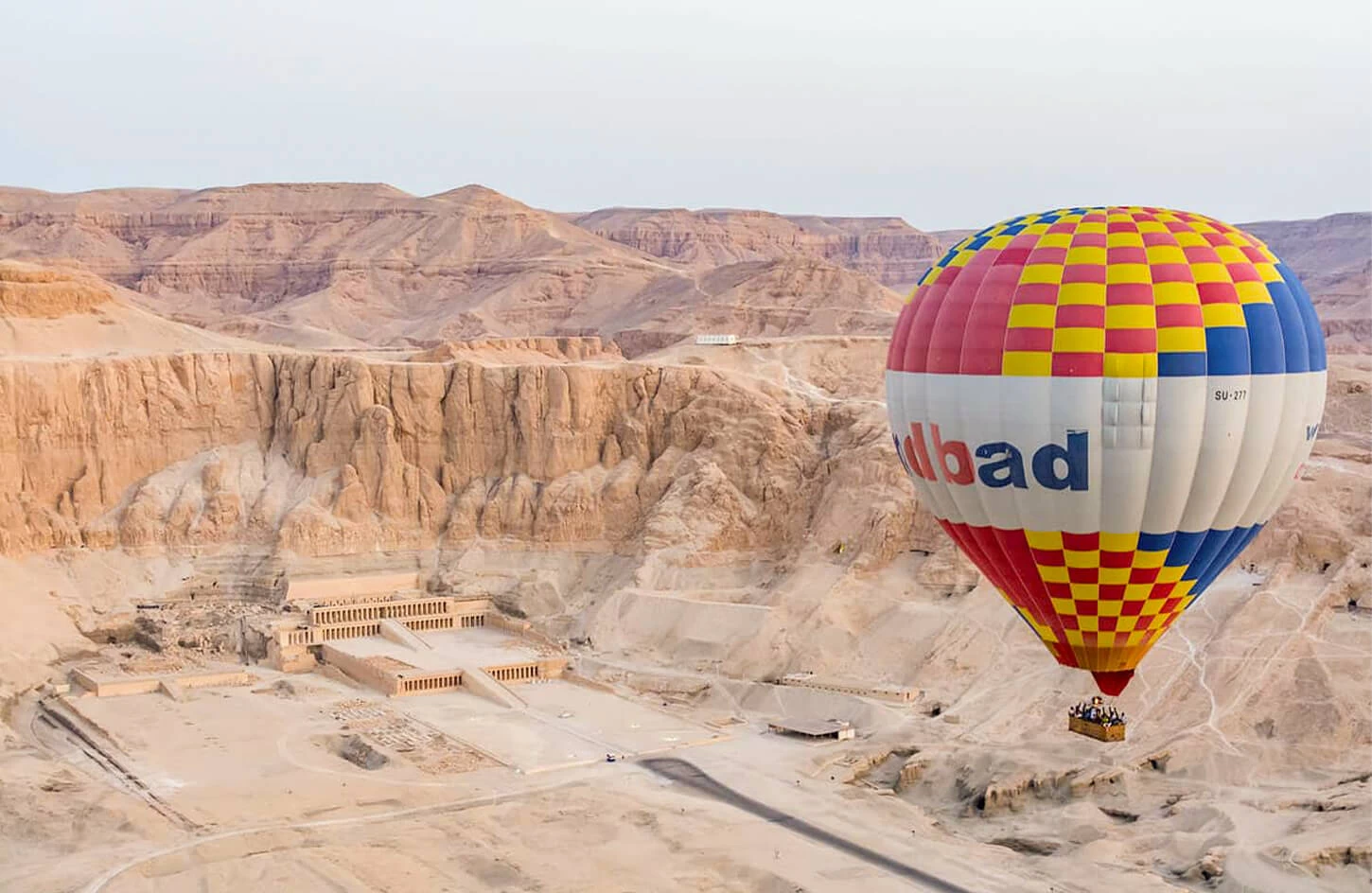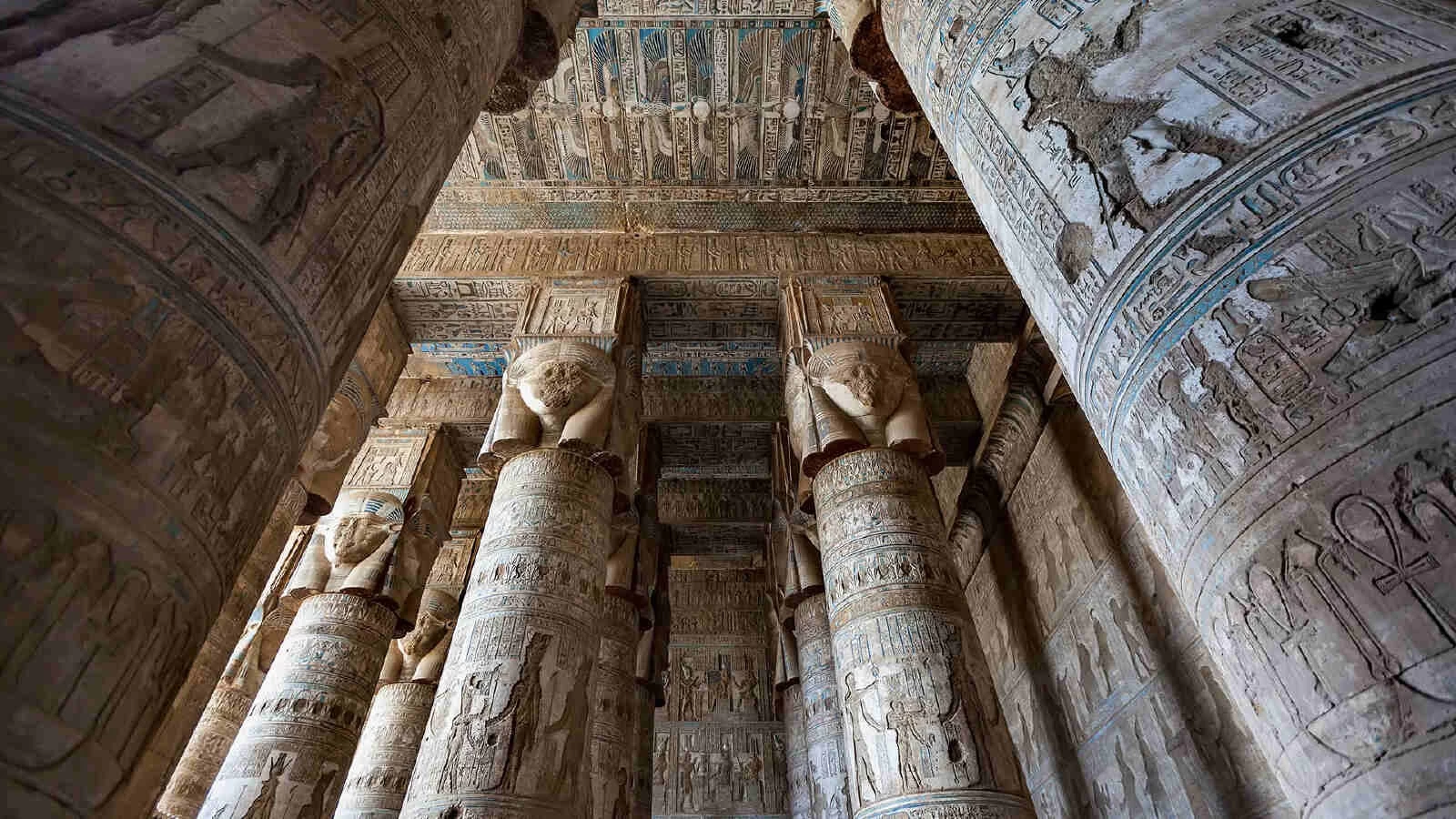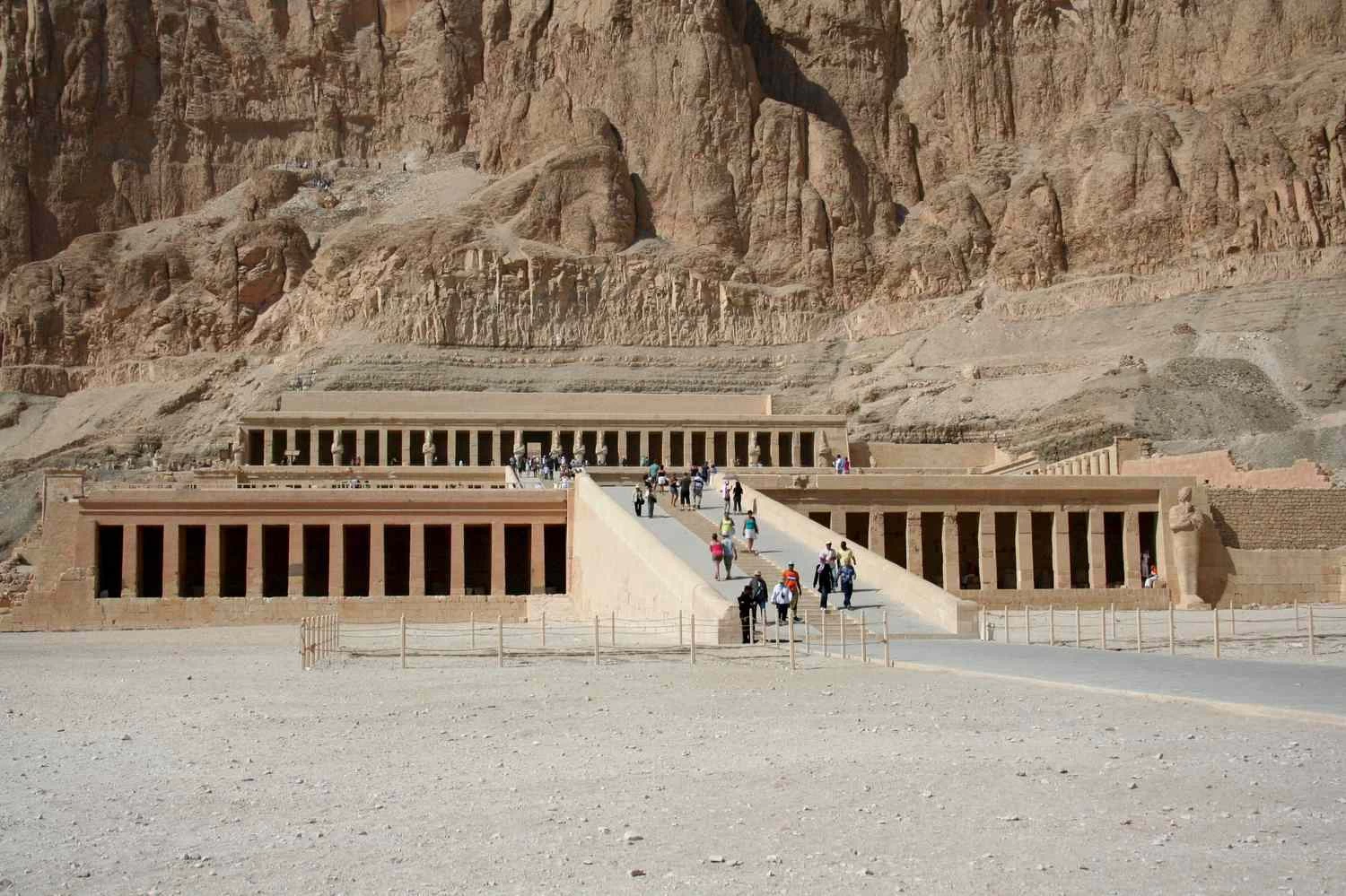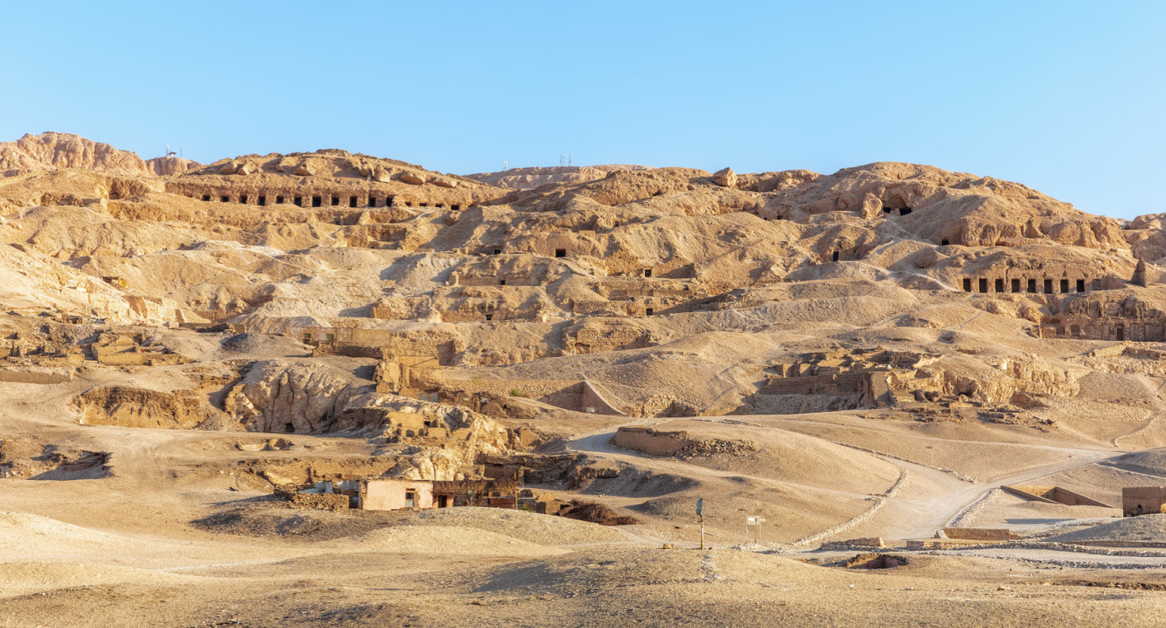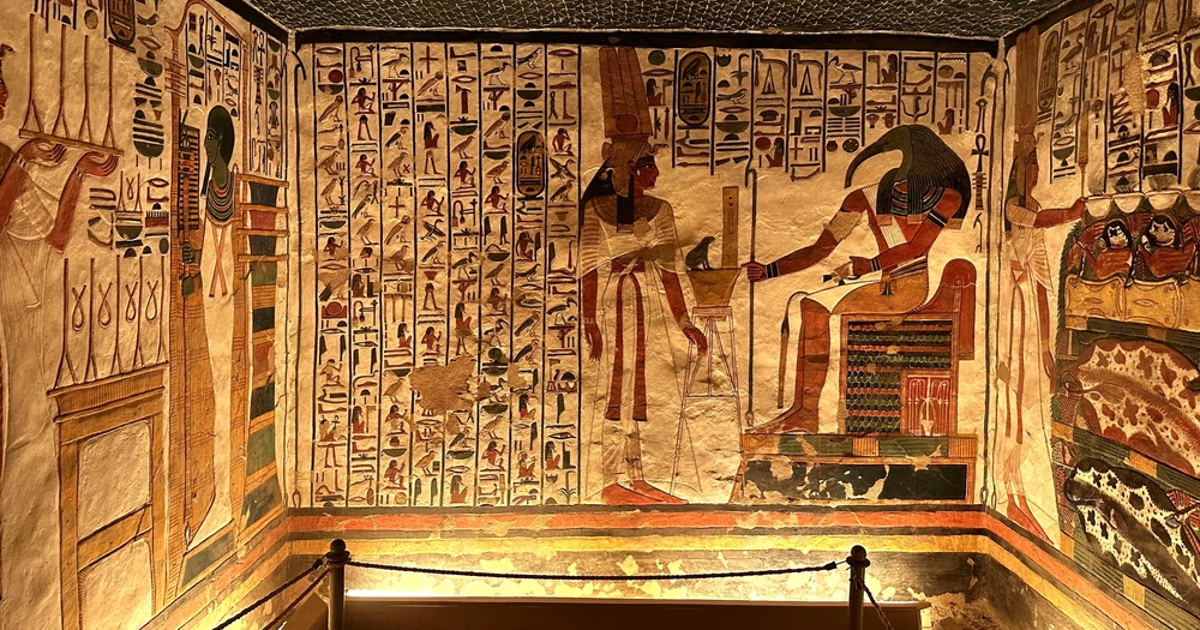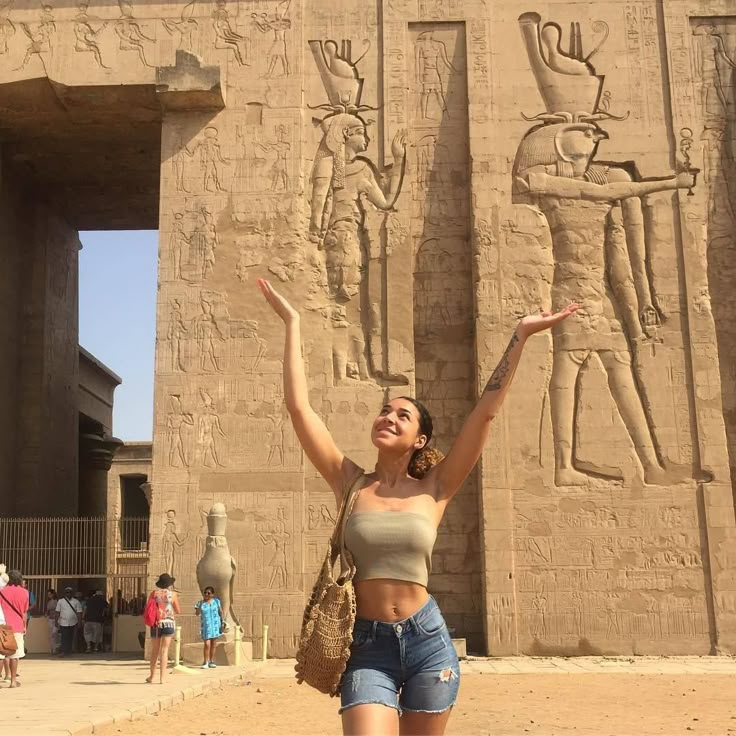The Ramesseum is the memorial temple
-webp.webp)
Brief about the Ramesseum Temple:
The Ramesseum, also called the Mortuary Temple of Horus, lies on the west bank of the Nile, near modern-day Luxor, in the Theban Necropolis. Reflective of the New Kingdom initiation, its construction began in the 13th century BCE and was vested by the worship of the pharaoh in death and of the god Amun. Grand temple architecture with enormous pylons and courtyards leads into a vast hypostyle hall adorned with higher reliefs that depict Ramesses II's campaigns, religious ceremonies, and divine legitimations. The place must have once contained a colossal statue of the pharaoh themselves, and the remaining complex stands as a testimony to both the power and fame of Ramesses II, celebrated in Percy Bysshe Shelley's sonnet Ozymandias. he Ramesseum is a famous attraction that can be fitted within a Luxor day trip, thus becoming a worthy highlight in tracing the royal and religious history of ancient Egypt.
Historical Significance of the Ramesseum
Historically, the Ramesseum qualifies as very important, having been erected during Ramesses II's reign as a clear symbol of power and prestige wielded by, arguably, the greatest king of Egypt. Meditated in the 13th century BCE, it was designated as a mortuary temple, bearing the dual political and religious functions of advancing the notion of the king's divinity in close relationship with a god, chiefly Amun. It conveyed a message exaltedly and ideally recorded in the inscriptions and reliefs the exploits of Ramesses II as a soldier; chiefly, the Battle of Kadesh offers key insights into warfare, diplomacy, and propaganda in ancient Egypt. The Ramesseum's library and scribal quarter further emphasize its role in the propagation of knowledge and its administrative application. The ruins as they exist today provide the foremost archaeological paradigm in the study of New Kingdom temple architecture and art, and of the cult associated with royal worship maintained through several centuries in Egypt. Typically made a star attraction of any Luxor tour, visiting the Ramesseum provides visitors with the opportunity to share in the massive heritage of one of Egypt's most famed pharaohs.
How to Get to the Ramesseum
Ramesseum is another amazing site to visit for anyone interested in Egypt's ancient wonders. On the west bank of the Nile River, the temple is easily accessible from Luxor city, which acts as a travel hub for travelers coming from all across the country. A good combo of the day tour would be visiting Ramesseum along with some other attractions, such as the Valley of the Kings or Hatshepsut Temple. Here's how to get there:
How to Get to the Ramesseum:
Begin from Luxor city: It is easily reachable by flights, trains, and buses from Cairo, Aswan, and other major Egyptian cities.
Cross the Nile:
Taking a local ferry or motorboat is a scenic journey.
Alternatively, take your car across by the Luxor Bridge just to the south of the city.
Now to the West Bank: Once on this side of the river, you can head on to the Ramesseum either by :
Taxi or a private car, very much found and convenient.
Tour buses or minivans' organized tours, which are included in most guided tour packages.
Join a Luxor tour: Many of the one-day tours in Luxor offer visits to Ramesseum and other important sites of the West Bank, thereby presenting a great prospect for tourists visiting for the first time.
Best time: Early in the morning or the late afternoon, mostly in the hot season (April–September), so as to avoid the midday heat.
Things to Do at the Ramesseum:
Admire the Colossal Statue of Ramesses II
View the remains of the huge seated statue, which was originally over 20 m. tall and inspired by the famous poem Ozymandias.
Explore the Temple Reliefs and Inscriptions
Look in detail at the carvings depicting scenes from the Battle of Kadesh, religious ceremonies, and offerings to gods.
Walk Through the Hypostyle Hall
Be mesmerized by the huge columns and fine architectural design, as was typical of New Kingdom temples.
Photograph the Ruins and Scenic Backdrop
Photograph the enchanting beauty of the temple ruins caught on canvas against the desert and pueblo cliffs of the Theban Necropolis.
Learn from On-site Information or a Guide
Consider employing an Egyptian scholar or join an escorted day-trip to Luxor so as to have added insight into the temple's history and symbolism.
Visit Nearby Attractions
The West Bank is full of marvelous sites, and thus your visit can be combined with a visit to the Valley of the Kings, Medinet Habu, or perhaps even to the Colossi of Memnon.
Experience the Quiet and Less-Crowded Atmosphere
Large temples like Karnak and Hatshepsut tend to attract lots of tourists and create a very busy atmosphere. The Ramesseum, in comparison, is very seldom ever visited, and thus is a rather tranquil setting for contemplation.
Tips for Visiting the Ramesseum:
Visit Early in the Morning
Temperatures in Luxor quickly up, especially between April and September. Be there earlier so as to avoid the heat and the crowds.
Wear sturdy Footwear
Stroll within the temple grounds with uneven surfaces and sandy paths, so wear sturdy and comfortable shoes.
Bring Water and Sun Protection
Bottled water, sunscreen, a hat, and sunglasses should be your go-to accessories for protection.
Hire a Guide or Join a Luxor Tour
Gain your insight from a guide, or visit places in Luxor with pre-arranged tours, as it enhances the value of the visit historically.
Bring a Camera
Ramesseum ranks high among photogenic destinations-ever thought of clicking those towering statues and inscriptions against a scenic backdrop?
Combine with Other Nearby Attractions
While on the West Bank, plan to visit the Valley of the Kings, the temple of Hatshepsut, or maybe Medinet Habu.
Cross-Check the Opening Hours for Ramesseum
Most places in the West Bank, including Ramesseum, open at about 6:00 AM until 5:00 PM, but may vary a bit with the season.
Carry Small Change for Entry Fees or Tips
Entry to the Ramesseum will require you to pay a small fee, and tipping guides or the local staff is customary practice in Egypt.
If you think this information will spice up a brochure or travel guide, do reach out!
